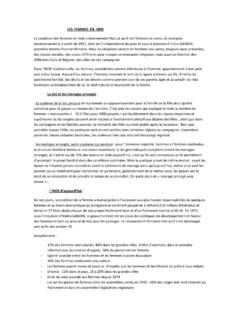Transcription of Melt inde x - griffex.com
1 melt index Mysteries Unmasked (as published in Film Lines (Canadian Plastics Industry Association, Winter 2003). Allan L. Griff, Consulting Engineer, Bethesda, MD 20816 USA email melt index . We buy materials, set conditions and sell very different materials can still have the same ratio . our products all based on this number, which has been , if normal melt index is and HLMI is 20, and if around for over 50 years. normal is and HLMI is 3. The ratio is 10 for both of these, yet they are very different. But it's not so simple. First of all, melt index (or MI, or melt flow index , or MFI) is a measure of melt viscosity, The unit of melt index is grams per 10 minutes, or but it's the inverse of real viscosity that is, a resin with decigrams per second. This unusual unit is often low viscosity (soupy, easy flow) has a high melt index , omitted, which doesn't cause much problem because no - and vice versa. There are correlation charts if anyone one uses any other units. wants to get viscosity in MPa or centipoises from a melt index number, but hardly anyone uses them in industry.)
2 The basic problem with melt index is that the test is slow, much slower than actual extrusion, and viscosity Either term is a measure of how big the molecules are, of a melt is dependent on its speed of flow as well as which affects flow: the bigger, longer or more branched temperature and basic molecular characteristics. This molecules get tangled up more, and therefore they flow dependence may be expressed as the power law factor, (slide over one another) with more difficulty. The size of which can vary between and 4 (or the reciprocal, a molecule is sometimes referred to as molecular weight, to , depending on how the power law equation so we can say that the higher the molecular weight, the is written). For a resin with a melt index of 1, the shear higher the viscosity, and because viscosity is push over rate at the exit is around 2 reciprocal seconds, while in flow, that means more force is needed to push them extrusion, the shear rates are about 100 in the screw through a passage such as a die or screw channel.
3 If channels, 200-500 in the die lips, and well over 1000 in viscosity is push over flow, its inverse, melt index , is the flight-to-wall clearances where much frictional heat flow over push , or the amount of flow for a given is generated! Thus, two materials with the same MI may amount of push, and a low melt index means a resin that behave quite differently in an extruder if their power-law flows with more difficulty, and therefore needs more factor is different. power, may run hotter, but yie lds a stronger product. It is useful to know melt index because it gives some A melt indexer is a capillary rheometer, a tube (capil- indication of how much power is needed, and thus how lary) in which the amount of flow (rheo-) is measured much heat will be generat ed in extrusion, but a plot of (-meter) under specific conditions (temperature, force). viscosity vs shear rate (or even two or three melt indexes The size of the tube is standardized at diameter at different loads) is much better.
4 Such information and length, but the conditions can be varied, so clearly shows why LLDPE needs more cooling, as its that different materials may have different test power law factor is down below 2, while regular LDPE. conditions, and comparisons must be made at the same is around , which give more flow for the push, or less conditions. An illustration of a simple melt indexer, plus frictional heat for a given production rate. additional information, is available on the web, at melt index also is a measure of product strength (lower = better) and environmental stress -cracking resistance For polyethylenes, by far the most common conditions (again, lower is better). Unfortunately, lower melt index are 190 C and kg force, which correspond to also means a greater tendency to show melt fracture, Condition E in ASTM tes t D1238. For polypropylene, which is one reason why processing aids are sometimes the temperature is 230 C, and for some polyethylenes the used as an alternate or adjunct to blending with LDPE to load is increased to kg, which is called the High allow cooler melt and thus higher production rate.
5 Load melt index , or HLMI. This is typically used for very low-flow materials, to reduce the test error and get more manageable numbers. Unfortunately, it has become common to cite the ratio of the two melt indices as melt Flow Ratio (MFR) instead of the two numbers. This is a nice example of the disease of ratiosis: two





